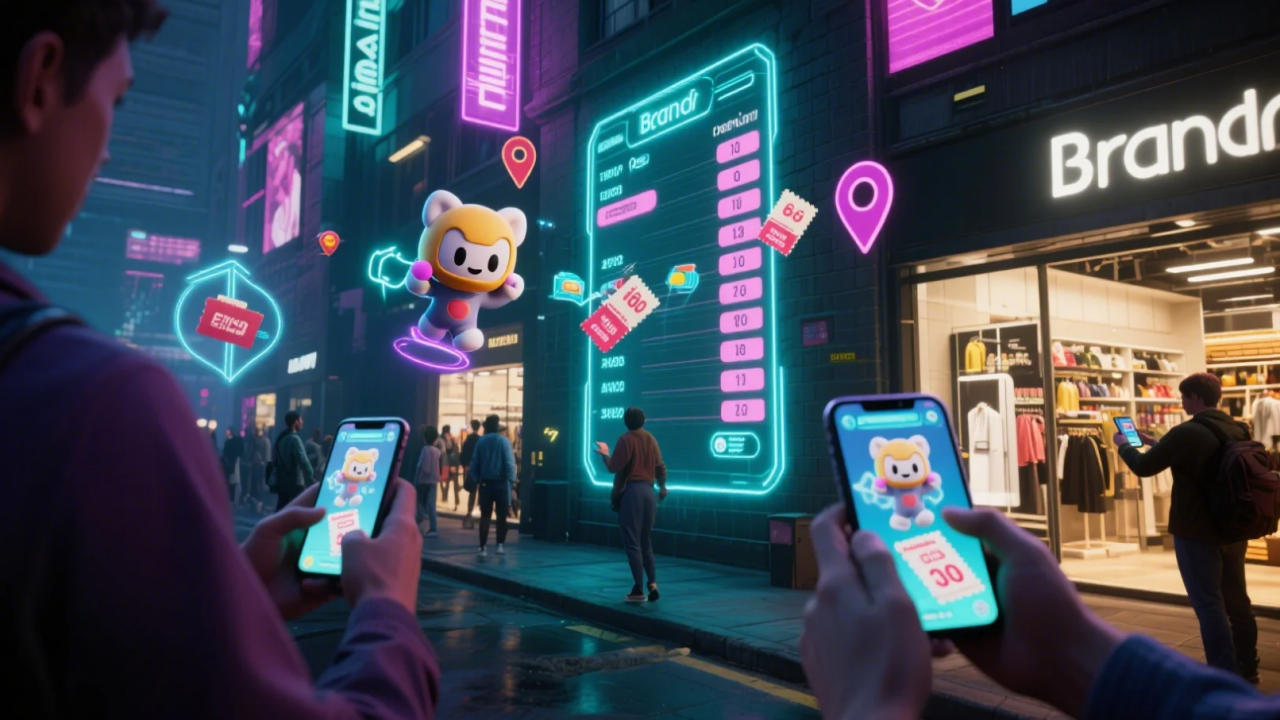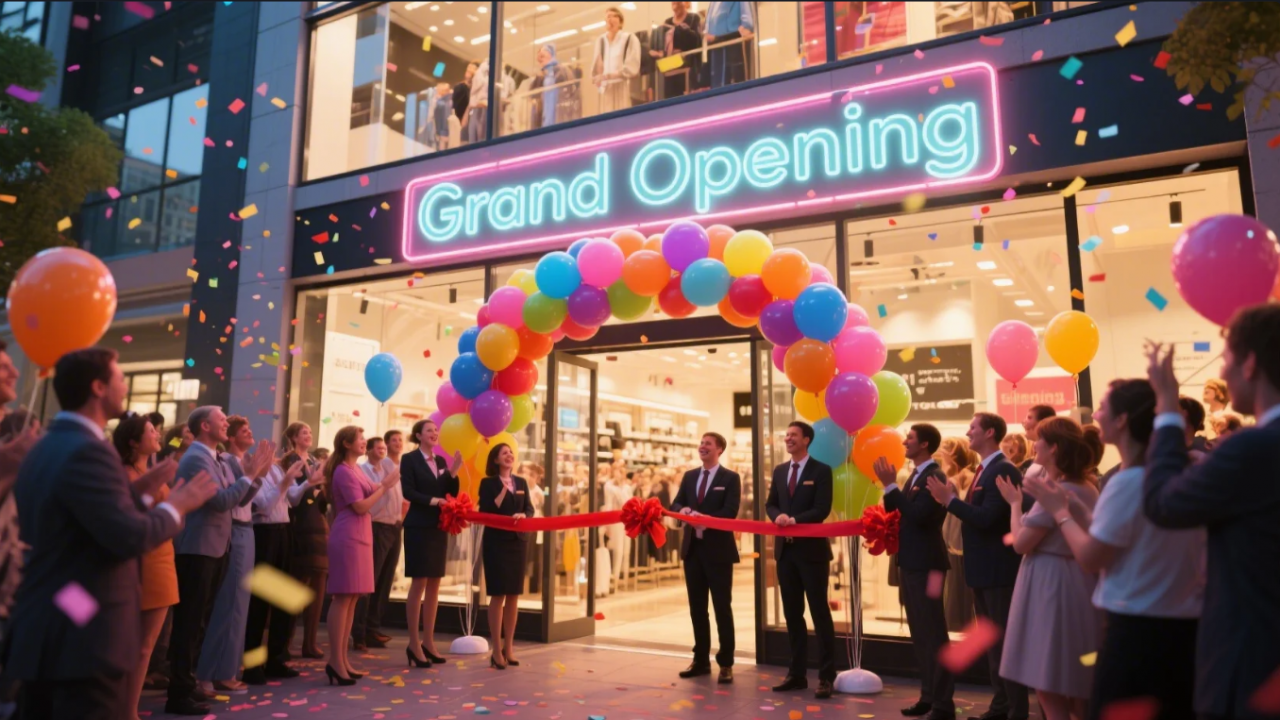Introduction
Since COVID-19, online shopping has opened horizons for many e-commerce businesses. Not only does the cutting-edge technology mark for an immersive experience, but it also explores the landscapes of how traditional shopping can cost more time and money. Besides that, the competitive market has been revolutionizing since users got a deeper understanding of size, scale, and more. Augmentation is not bridging the gap and enhancing customer confidence and satisfaction while making a final decision on the purchase.
What is AR e-commerce, and how does it improve online shopping experiences?
Augmented reality in e-commerce is a force to be reckoned with. It operates by superimposing digital representations of products onto the real world, typically through the use of a smartphone or other AR-enabled device. This technology is causing a remarkable increase in the industry, as it allows users to visualize products in a real-world context, enhancing their online shopping experience.
Accessibility is the cornerstone of online shopping, and AR is redefining it. The ability to explore products in depth, all from the comfort of home, is a game-changer. The merging of convenience and comfort is a testament to innovation, empowering modern customers with confidence in their purchase decisions.
With an accelerating trajectory, the generations after, including Gen Z, showed keen interest in an immersive shopping experience through AR. While it is gaining popularity worldwide due to the widespread adoption of smartphones, staying relevant is also coming into question. However, challenges such as the need for high-quality product images and potential user privacy concerns may hinder its widespread adoption.
Top 7 Applications of Augmented Reality in E-commerce
AR-powered virtual try-on
Clothing try-on
Since augmentation is reshaping how things should be done in e-commerce, virtual try-ons are one of the many new transformations added to the industry. Starting with clothing try-ons, one of the prime examples of why we need to reduce physical trials. Visualizing the outfits in real-time, from the ease of the homes, clothing try-on is the epitome of ensuring proper fit and style, thereby reducing the likelihood of product returns and increasing customer satisfaction.
For example, an astounding celebration of Chinese New Year with Tommy Hilfiger and Miffy introduced virtual try-on clothes. Users can preview the look of the clothes released in the new collection of TH and Miffy. This collaboration showcased AR overlays garments onto the user’s body and provided insights into fashion practicality. With preferences for body shape, size, and style, everyone can have a cozy time.
Virtual footwear try-on
AR-powered tools let users virtually “wear” shoes, enabling them to evaluate designs, sizes, and styles. This is especially beneficial for sneaker enthusiasts and those seeking trendy footwear. It helps users determine which footwear complements outfits and explore exclusive collections from their homes.
GuccixAdida’s collaboration of virtual footwear try-ons further examined this remarkable journey. The luxury fashion brand Guccis offers an innovative augmented reality experience for its exclusive shoe collections. This integration helped customers explore styles and impose real-time visualization by pointing the device at their feet.
Watch Try-on
Watches are the latest trending accessory, as many brands are simplifying their approaches and making them more desirable. From luxury to every day, augmented reality lets customers visualize how watches will look on their wrists. By scanning their wrist with a smartphone, users can try on multiple designs and sizes. This allows for the comparison of various models and simplifies the selection of the perfect size.
Jewelry try-on
jewelry try-ons are the go-to for the new generation. This prescient was introduced in the e-commerce industry as a real-time experience. This entity allows customers to make a promising decision before purchasing. Point a smartphone’s camera to a specific part of the body, and you will be ready to shine bright like a diamond.
Cosmetics and beauty products try-on
Since augmentation is being experimented for a number of game-changing experiments, it’s safe to say that cosmetics and beauty products are also in the game. From matching foundations for skin tones to experimentation without guesswork, virtual try-ons are becoming a standard feature in modern e-commerce.
A setting fashion example is TTDeye’s Colored Contacts, which lets you try lenses of different shades. Through camera integration to scan the user’s face, the focus is on the eyes, and lens simulation is digitally overlaid in an accurate manner. The preview is customized and lets the customer choose from various colors, designs, and styles to explore a variety of looks effortlessly.
Source: Kivisense YT
Product placement and visualization
Furniture and home decor
Since all industries are stepping up with augmentation, furniture and home décor are also on their way to the top of e-commerce. Now, users can explore the variety of furniture and décor from the cozy setting of their home. Just drag the phones where you want the furniture and see how it will complement the room.
AR is revolutionizing home renovation by eliminating guesswork. With AR furniture placement, users can scan a room with their smartphone camera and instantly place sofas, tables, and décor items. This reassures them that they can design their room exactly as they want, all from the comfort of their home.
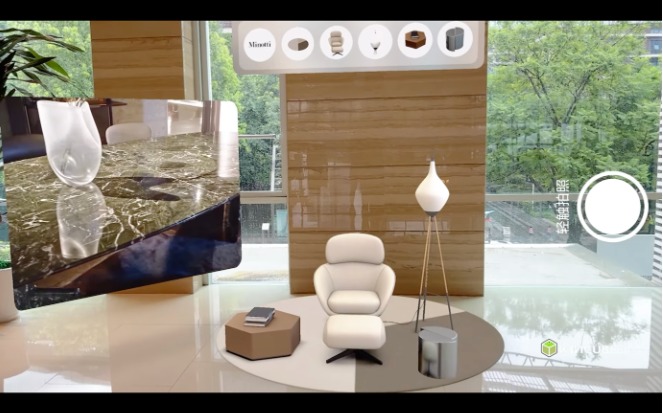
Source: Kivisense YT
Electronic devices and gadgets
Since the e-commerce business is taking notice, AR delivers visual elements on smartphones, glasses, or headsets. This entity promotes the selling of various products and makes considerable money while ensuring a rush-free business. Not only that but instigating interest in traffic while keeping up with trendy augmentation features marks a significant perception in buyers’ minds.
Like that, the Redmi Pop-Up store AR experience is not just a showcase of products but a journey into the Redmi universe. It highlights the brand’s commitment to providing customers with cutting-edge experiences that are as innovative as their products.
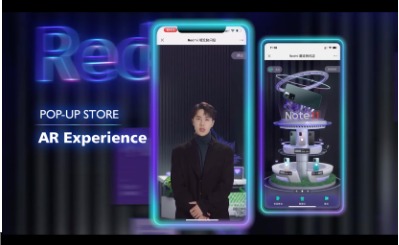
Source: Kivisense YT
Gamification of content with AR
Since games are in for the season, small challenges make up for the loss of time while loading. Mini-games are tasks that give rewards and points that can be used while shopping and keep the audience entertained. Herborist’s Adorable AR Garden amplified this remarkable attempt for the Year of the Rabbit. Since the Year of the Rabbit associates gentleness with peace, this delightful augmented reality feature creates a unique way to connect with nature and Herborist’s products. It also combines cultural significance with interactive fun.
Engaging advertising campaigns
AR is not just transforming advertising in e-commerce, it’s creating highly interactive and immersive campaigns that captivate audiences. By blending creativity with technology, brands are using AR to deliver memorable campaigns that drive customer engagement, loyalty, and sales. This immersive experience keeps the audience engaged and excited about the brand.
An example of the above-mentioned campaign is the KFC Advertising Campaign with Metaverse Virtual Dancing Experience. By savoring the taste of KFC and innovating the digital space, augmentation has upped the game to modern trends. This entity is well maintained through its signature playful identity. From customizable avatars to dynamic music and dance challenges, this campaign is not just any advertisement but a playful enactment of the best.
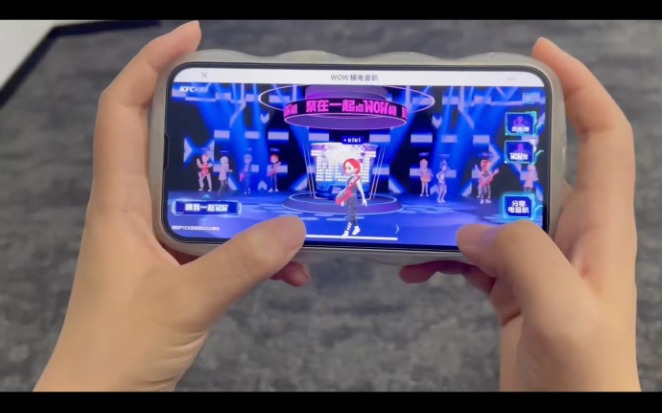
Interactive augmented packaging
Since e-commerce is all about safe packaging, it has become more about interactive packaging as well—not the one with traditional hanging elements but the one with digitalization written all over it.
This feature was introduced through Budweiser’s renowned World Cup campaign branding. Integrated with AR and AI, this cutting-edge technology packed with sports passion allows users to scan the cans and preview colorful digital avatars for each team. This exclusive experience is the bandwidth of virtual prominence during the World Cup.
Benefits of Augmented Reality in E-commerce
Reduces product returns by setting accurate expectations
The beginning of augmentation gave a sentimental expectation amongst customers. The virtual preview of products helps visualize how certain objects, accessories, or makeup will fit into their real life. This helps set more realistic expectations and reduces the likelihood of returns, as customers are more confident in purchasing decisions.
Boosts customer engagement and conversion rates.
The most important factor in a business is keeping the attention from moving anywhere else. That’s where interactive and immersive shopping experiences come in. Augmentation captures customers’ attention. This confidence-building technique is for making quicker decisions and boosting customer engagement.
Enhances brand loyalty with immersive experiences.
AR provides customers memorable and enjoyable experiences that build a deeper emotional connection with a brand. As customers interact with the products in unique, immersive ways, their attachment to the brand increases, fostering long-term loyalty.
Conclusion
Since e-commerce business individuals have learned to keep up with the current trends, the idea is to make the shopping experience more diverse. This enhances customer satisfaction and blends loyalty with sales. That’s why Kivisense is the first business in China to offer augmentation in all industries. From fashion try-ons to previews of furniture décor, everything is just a tap away or needs a digital screen.


